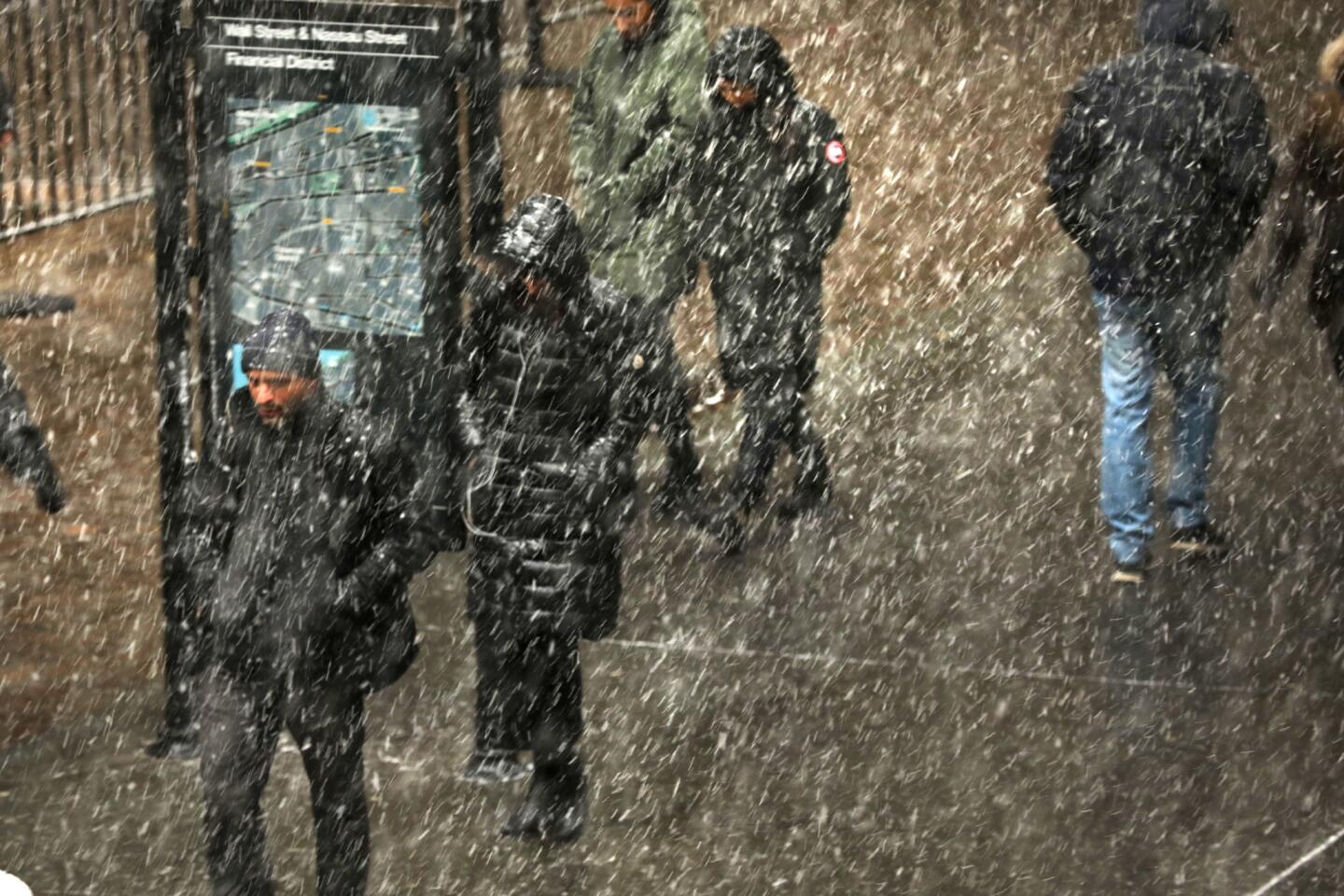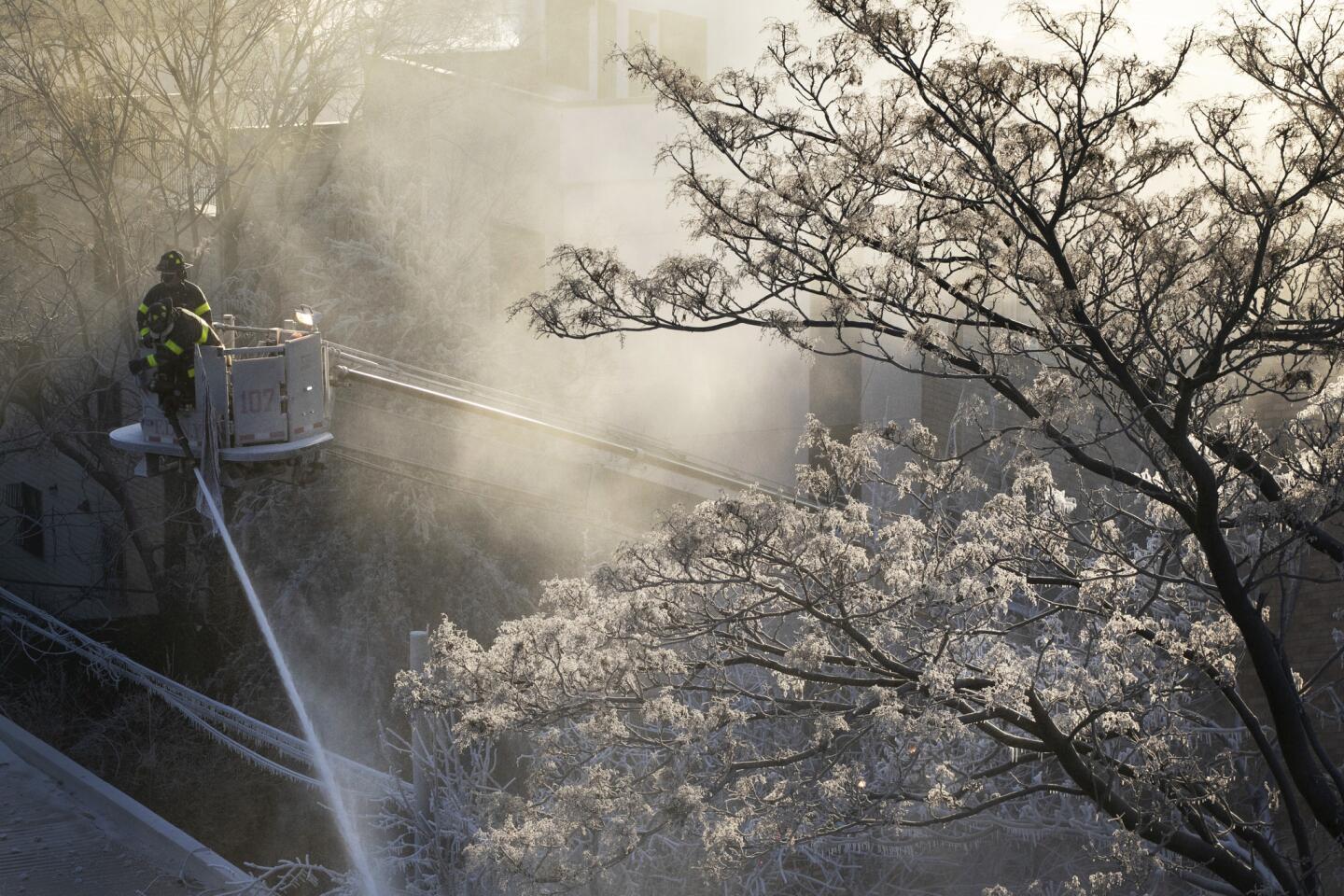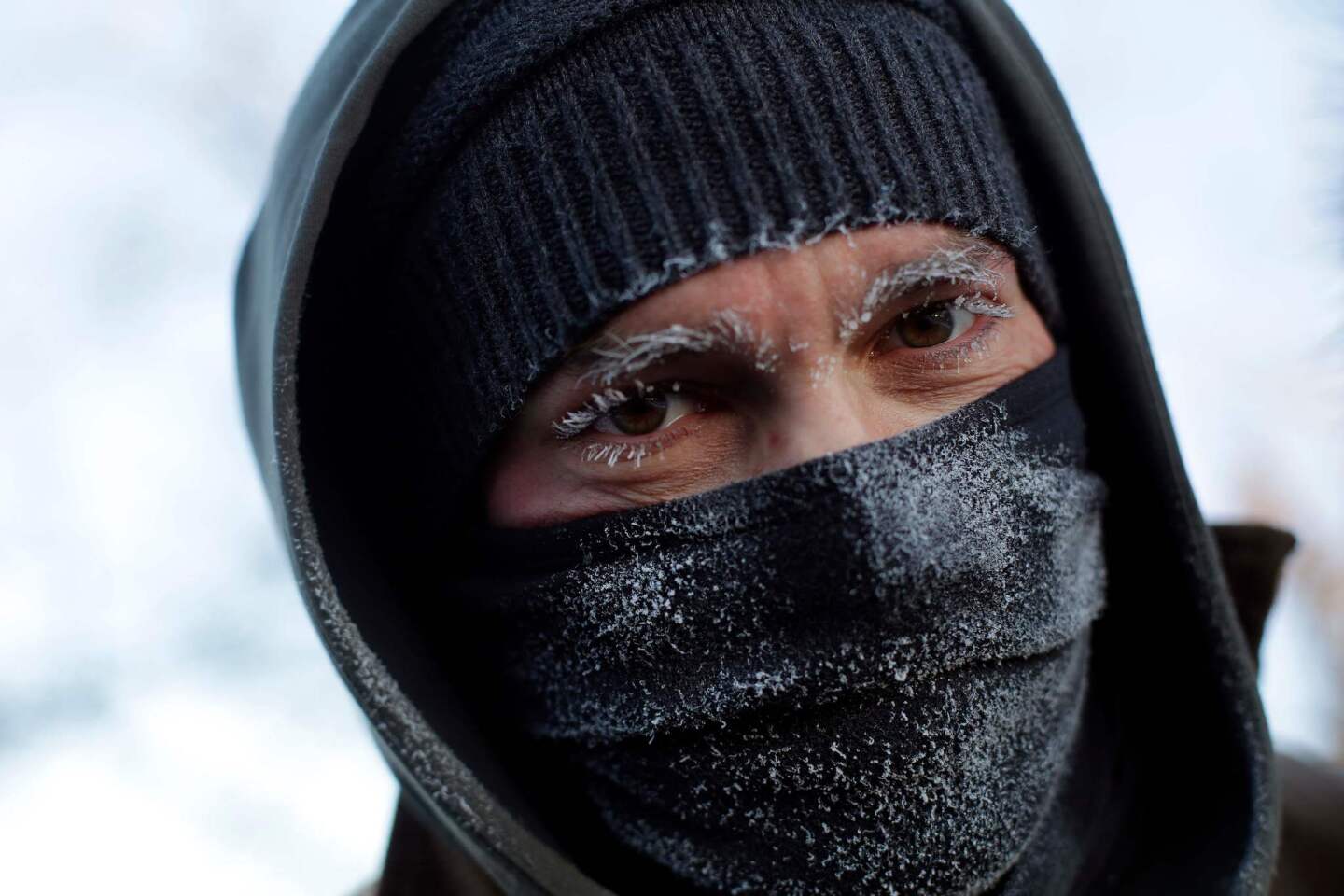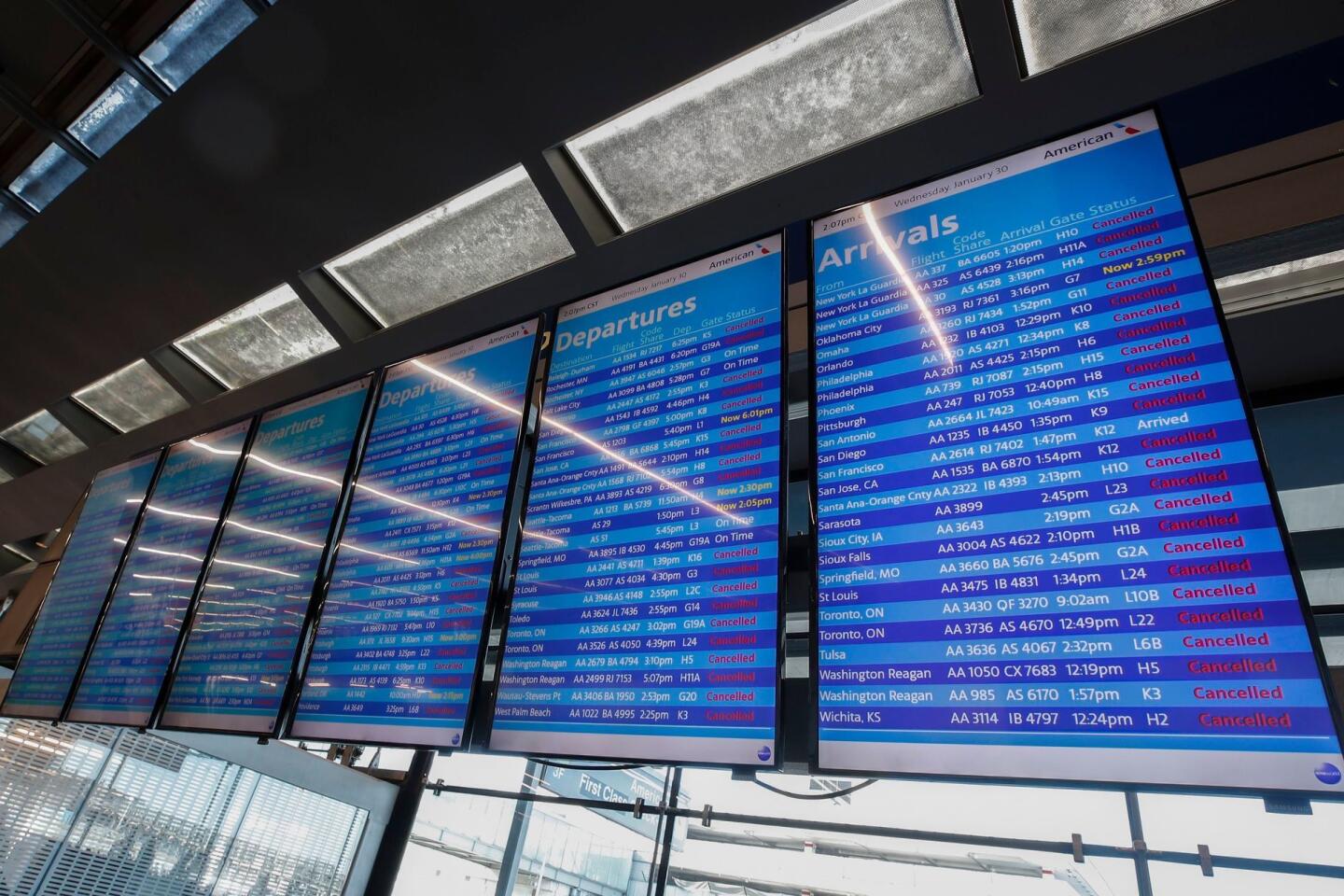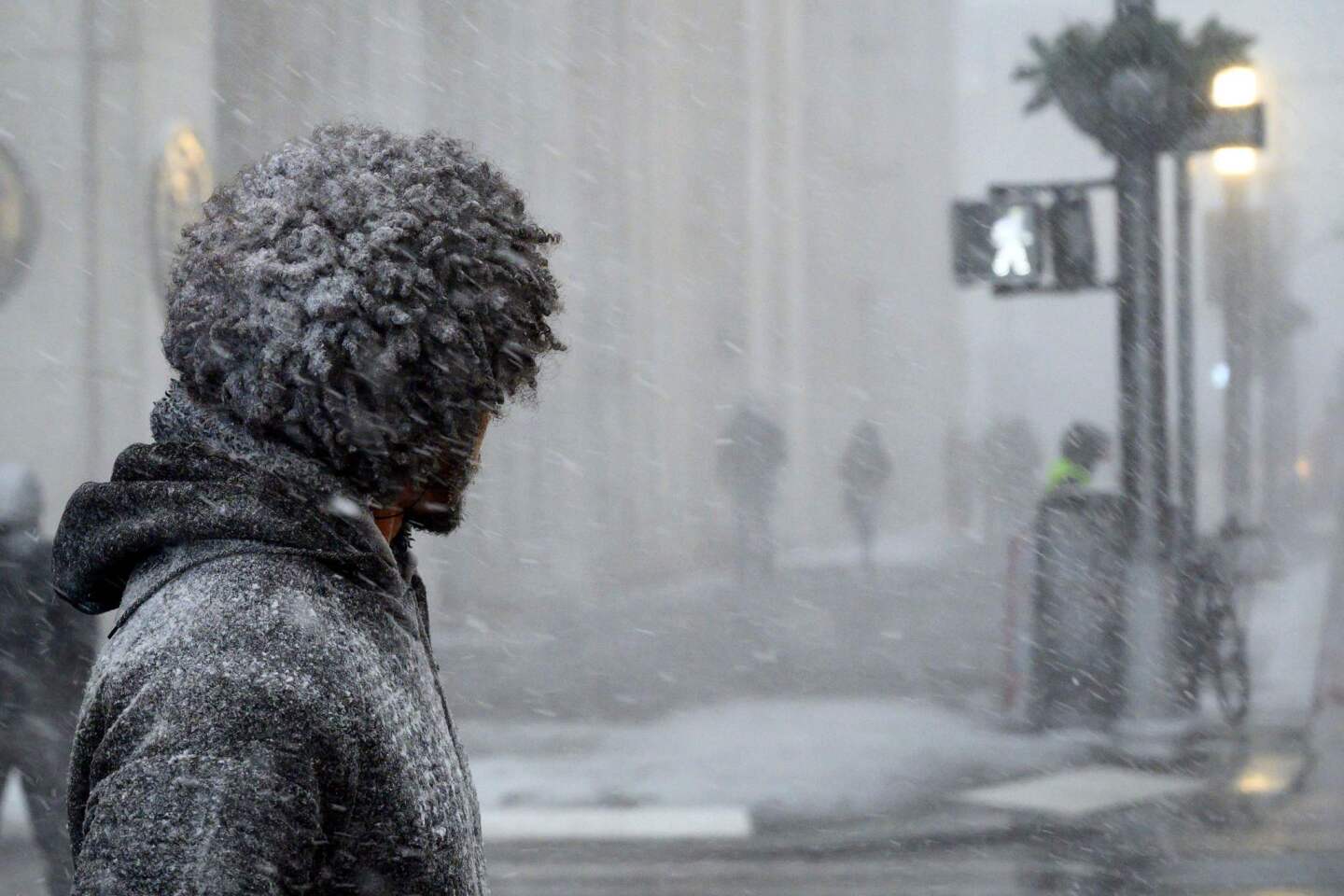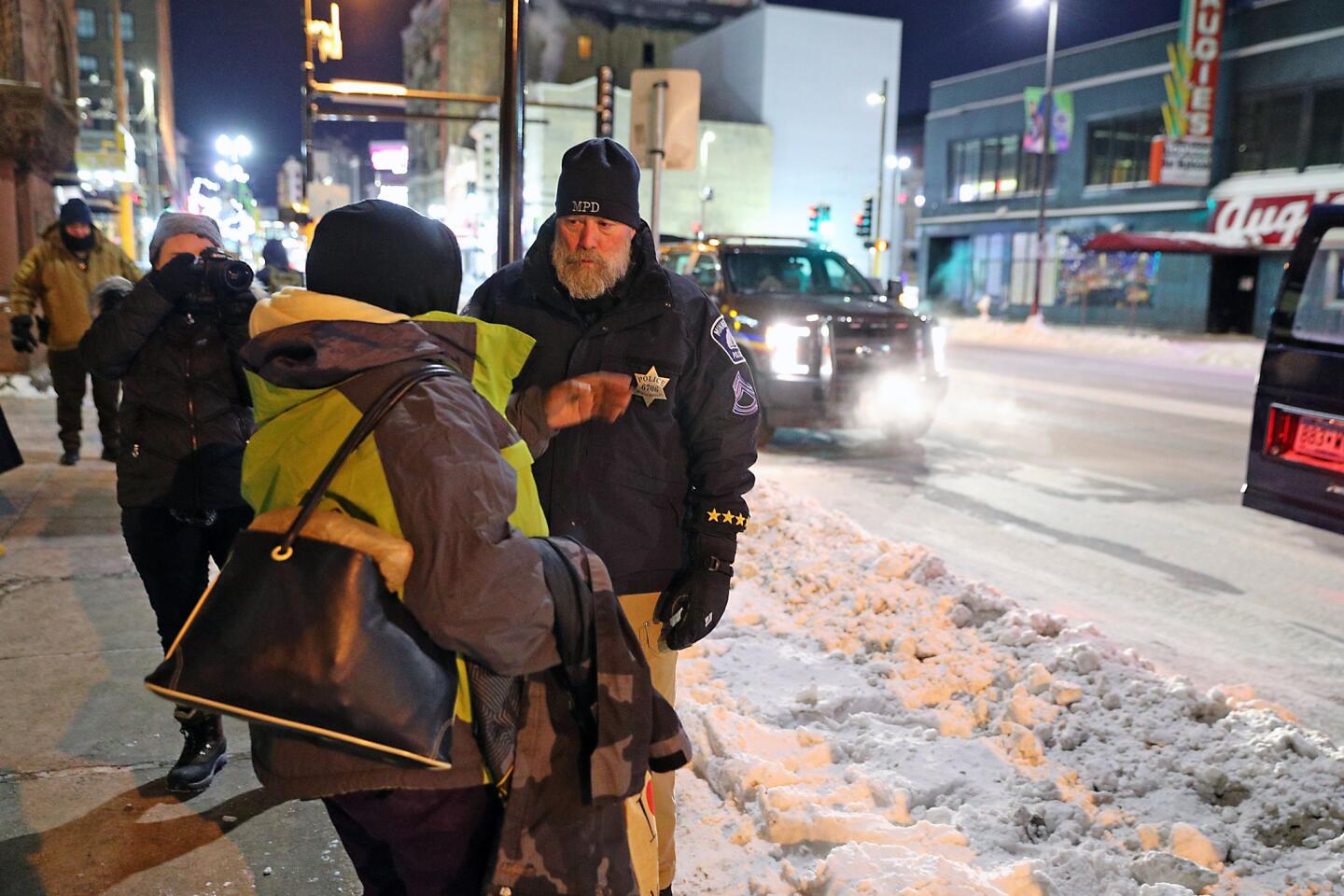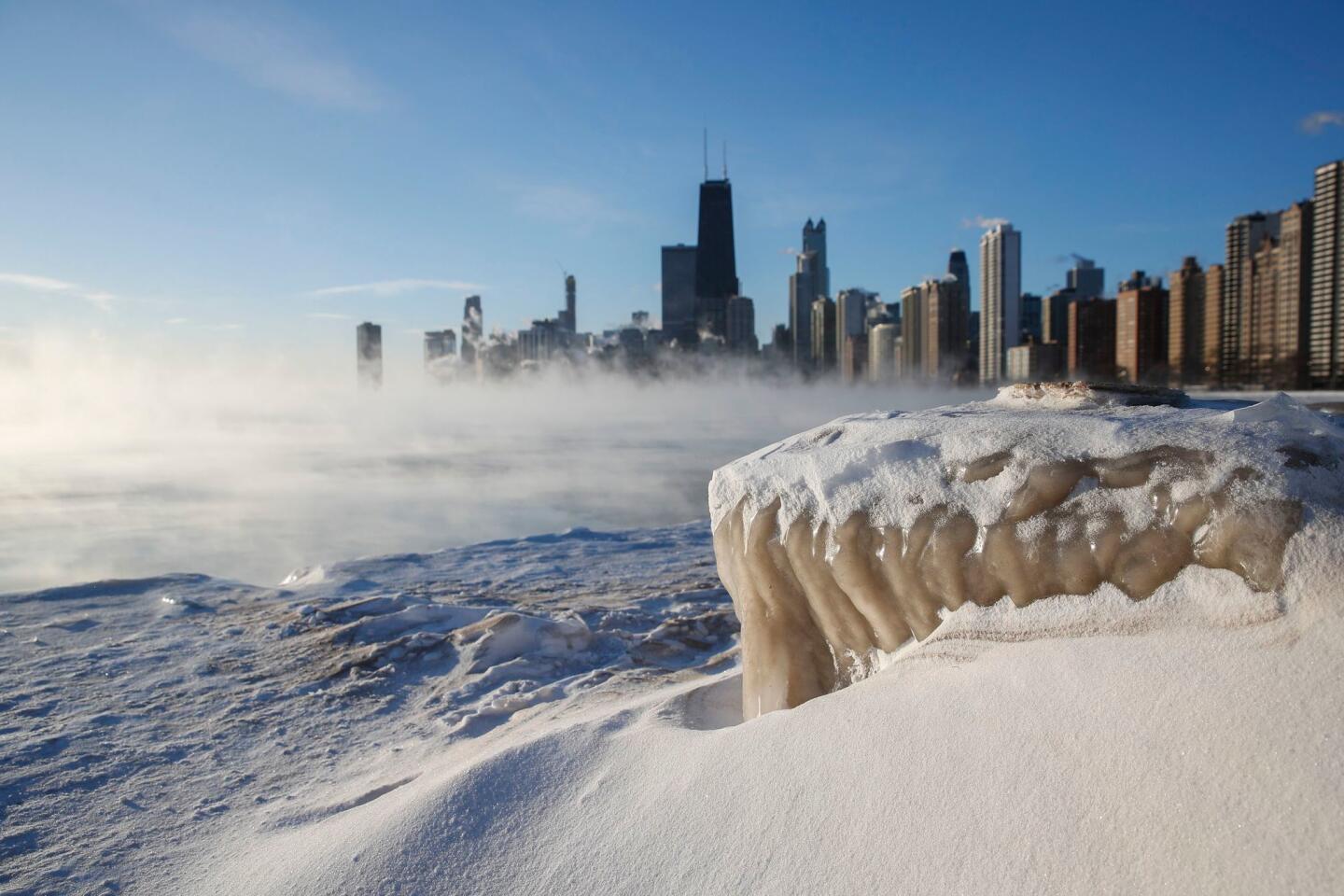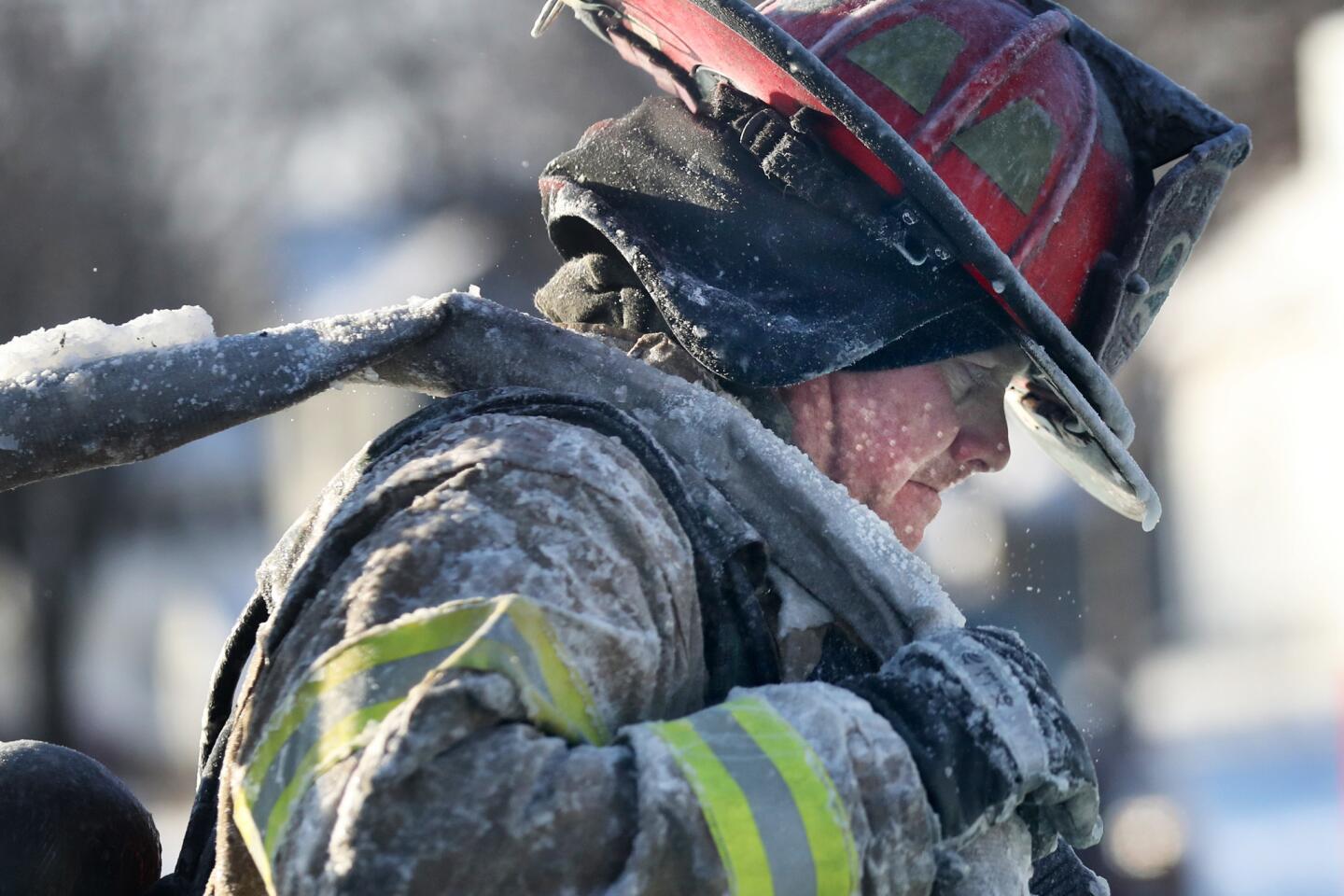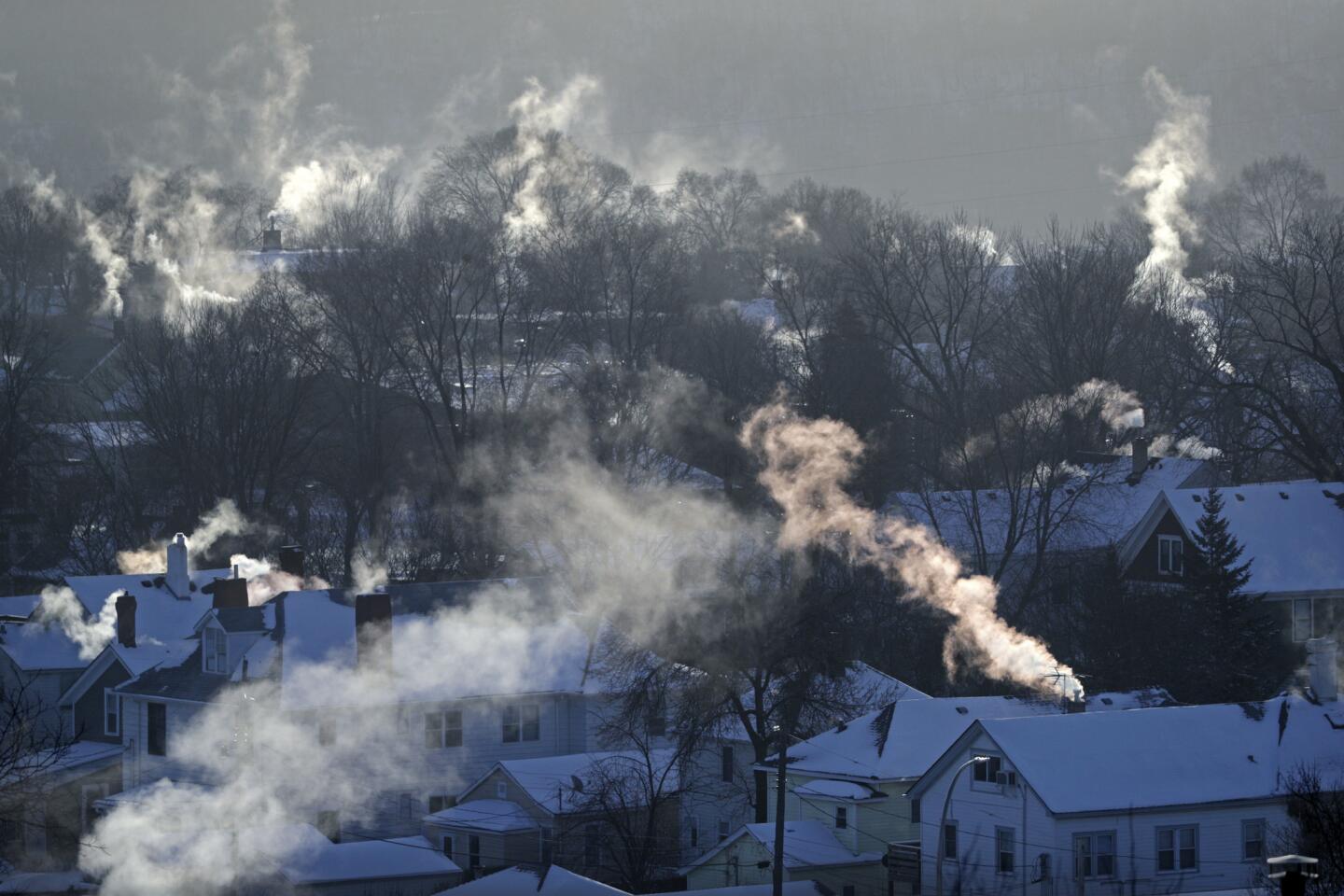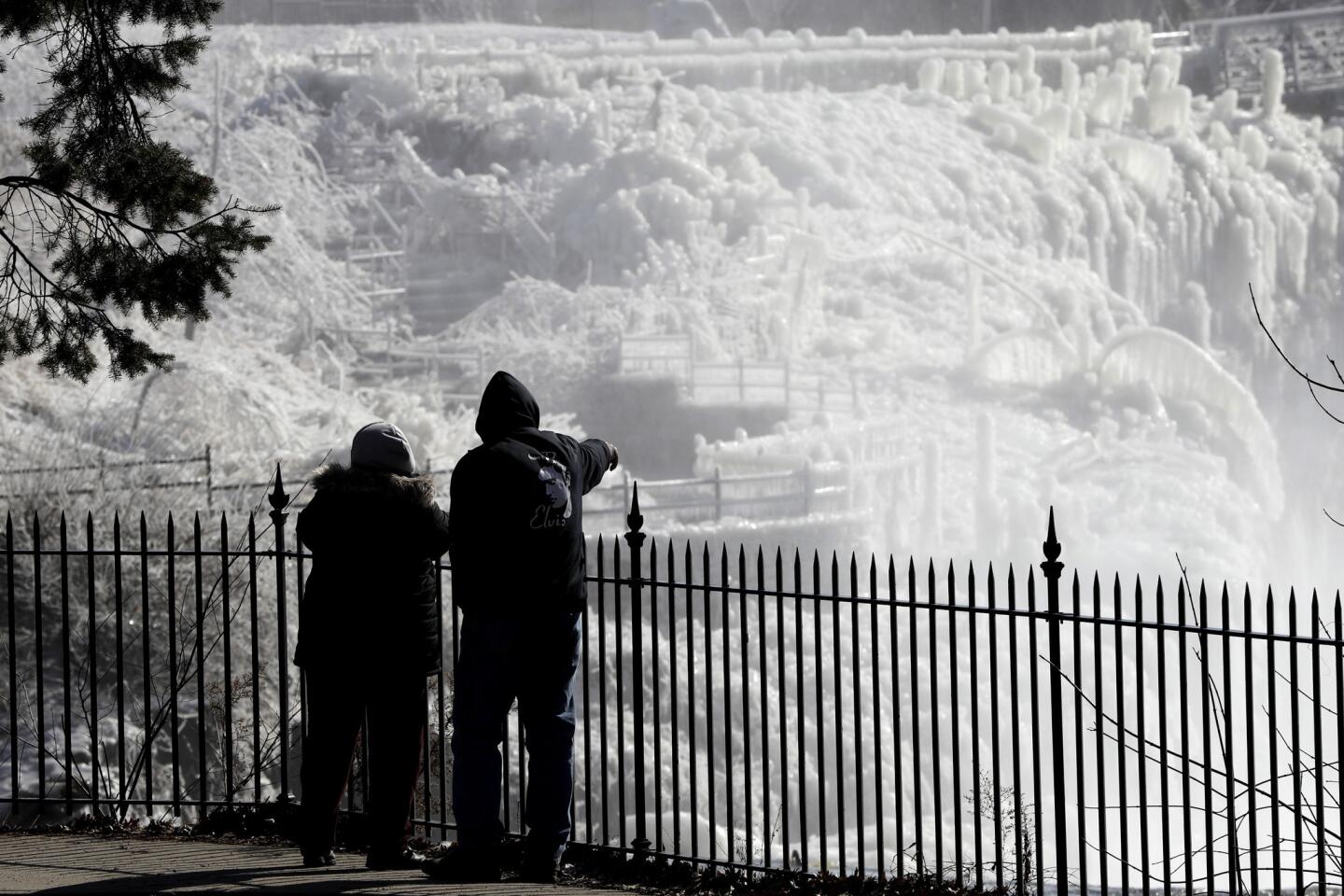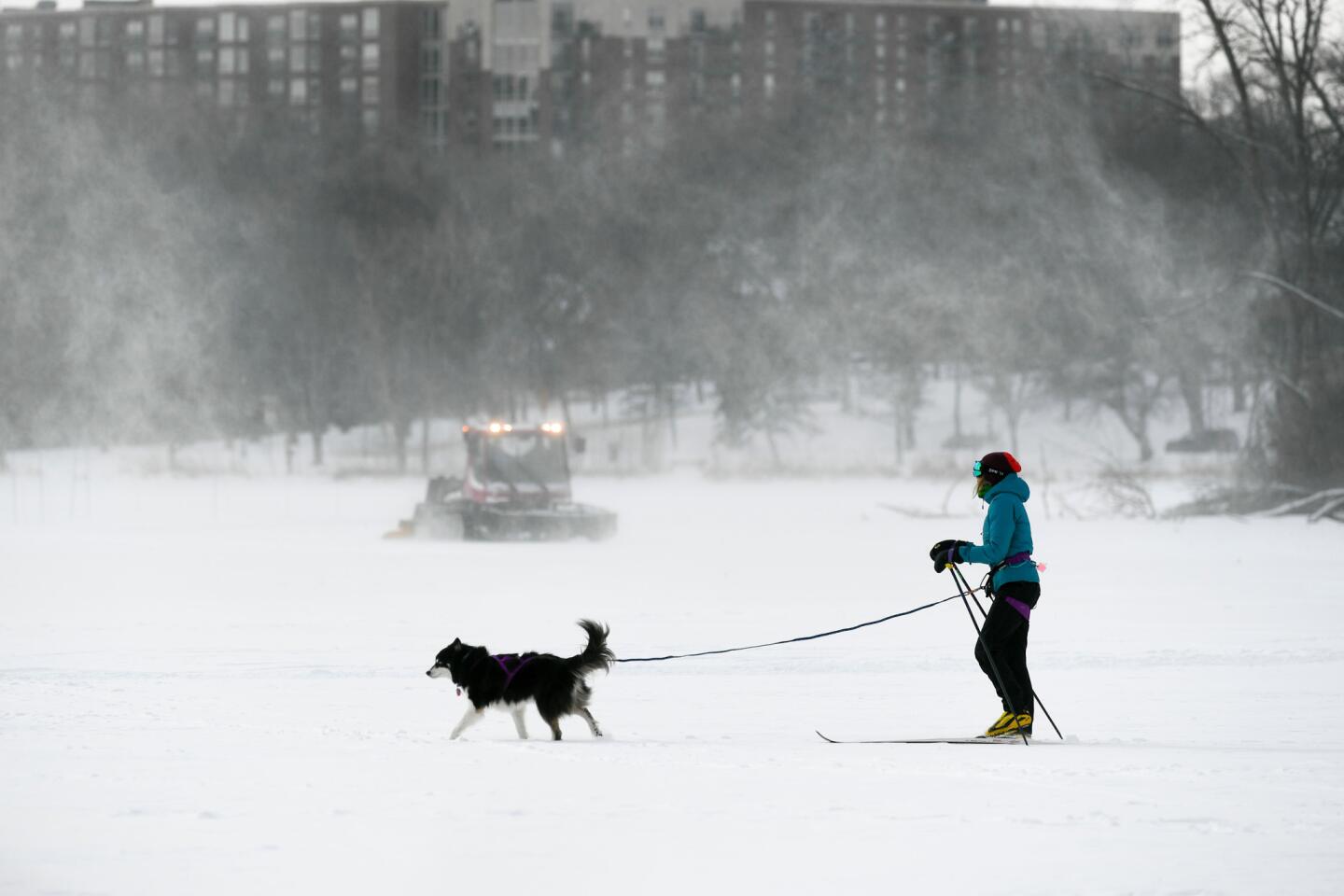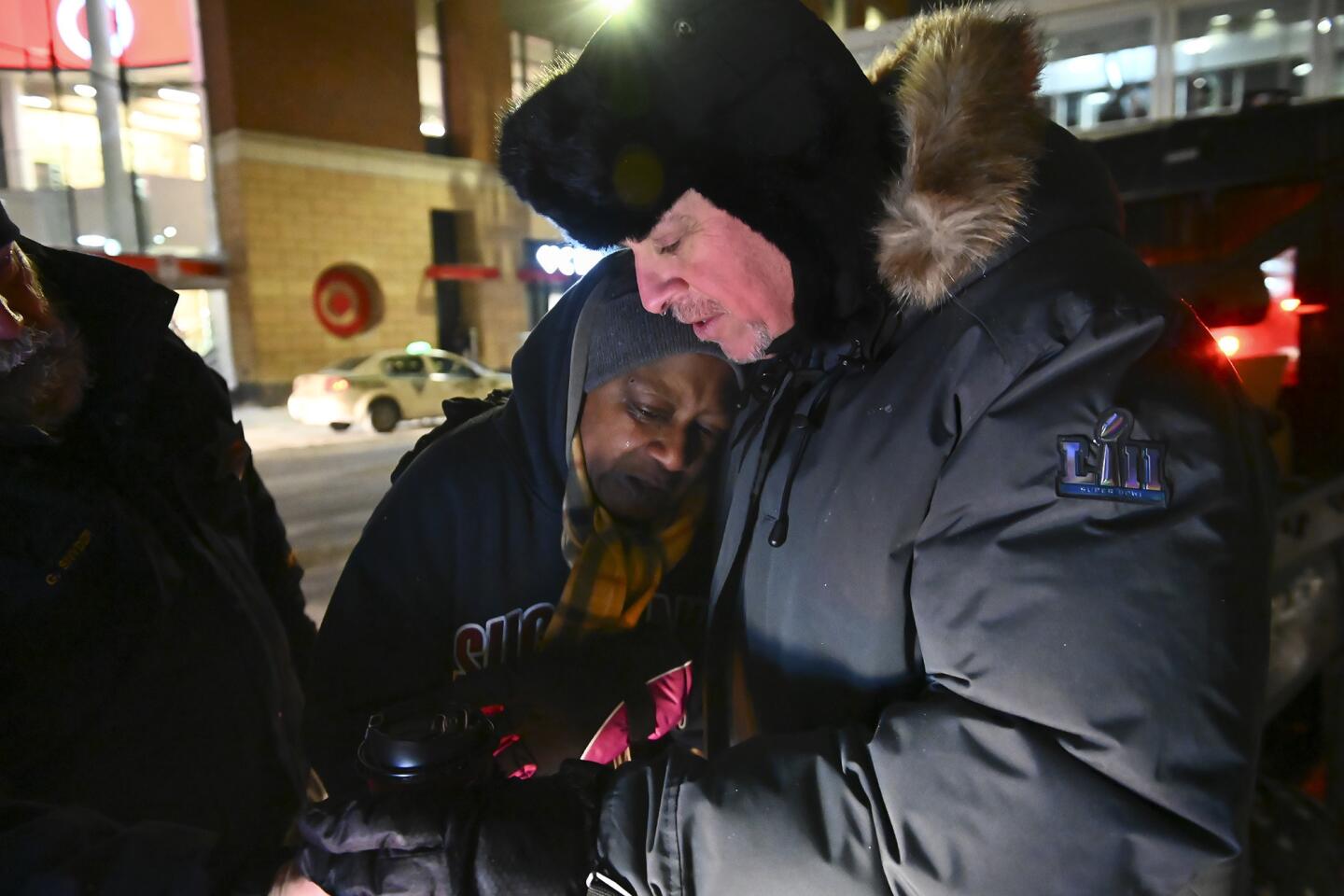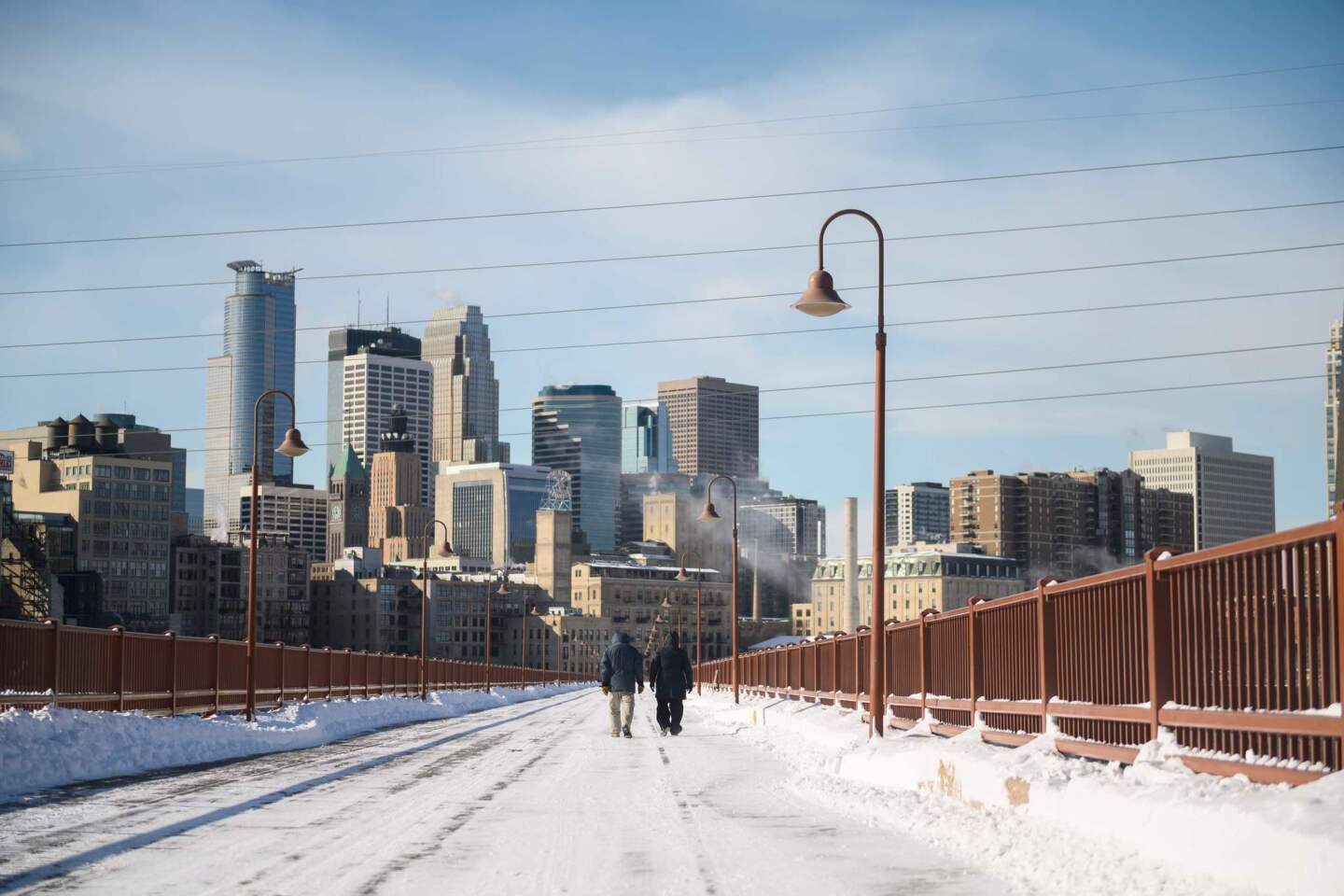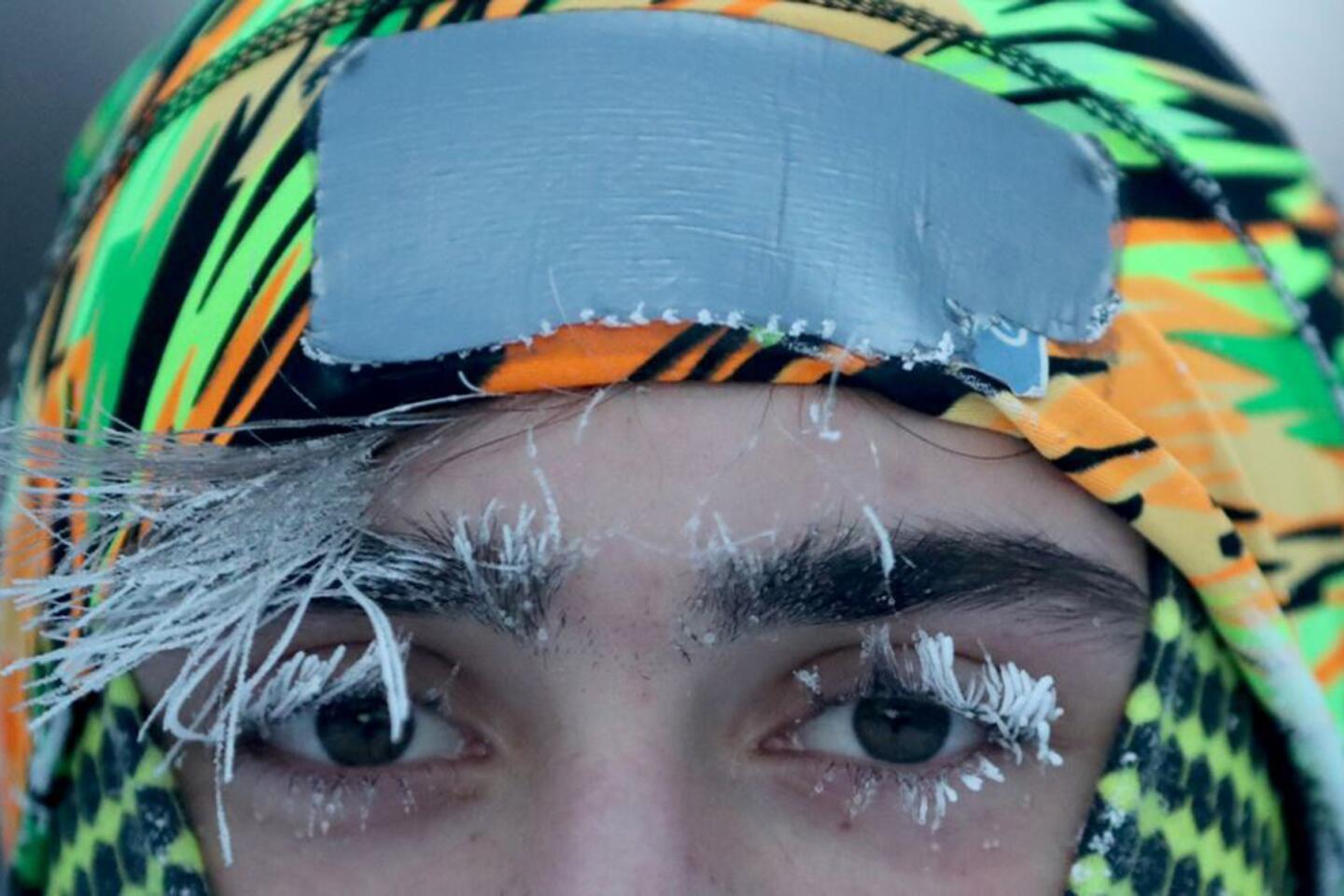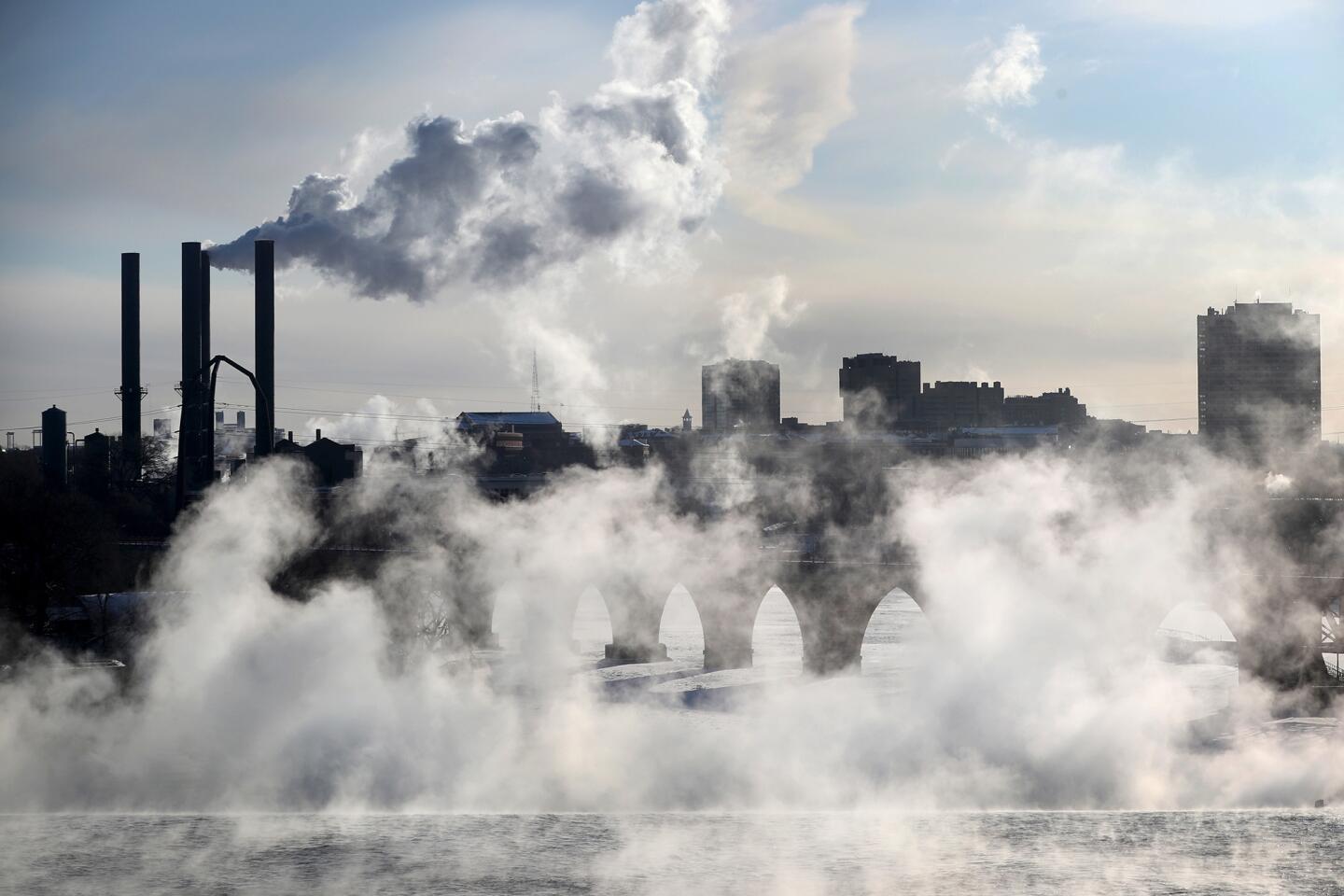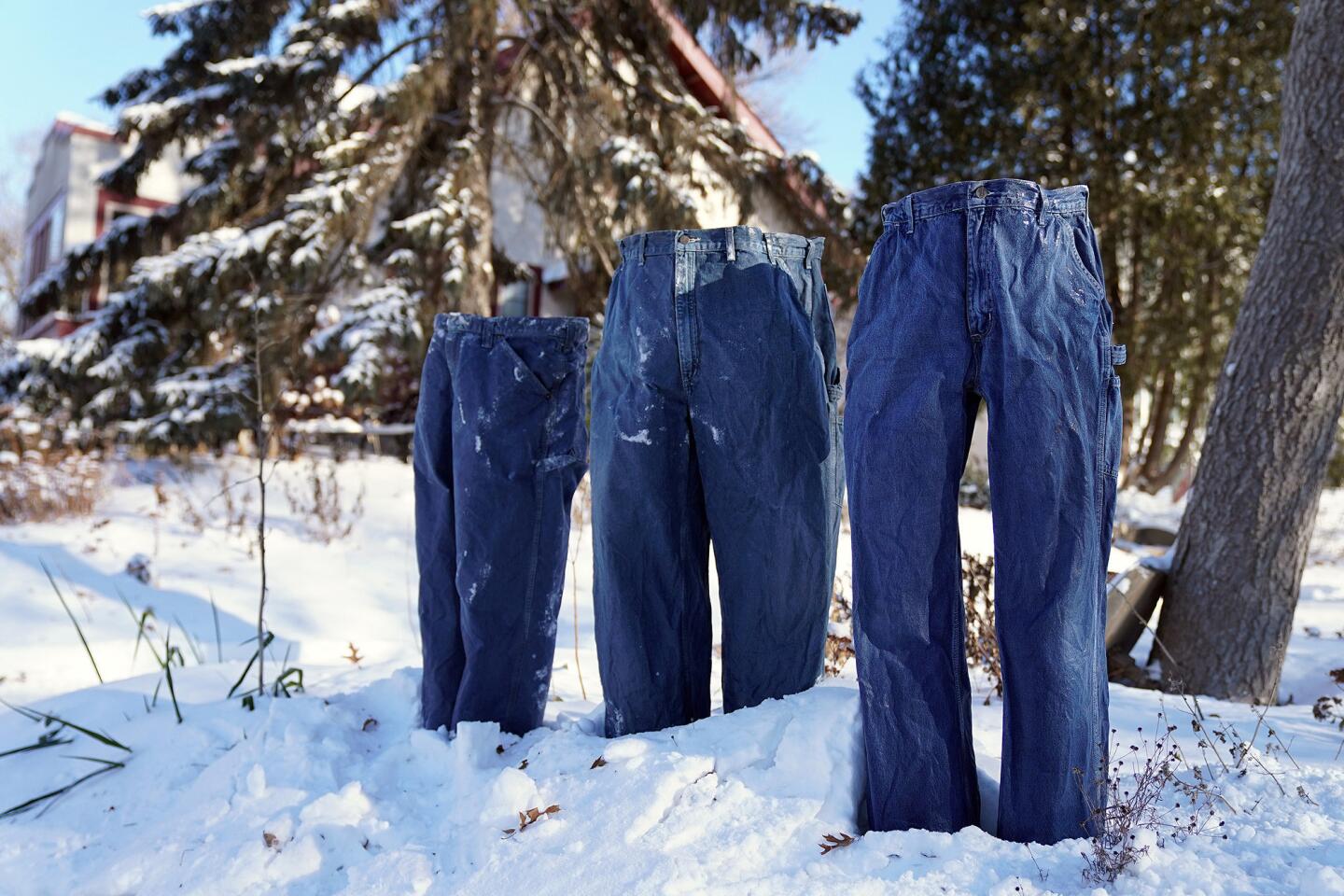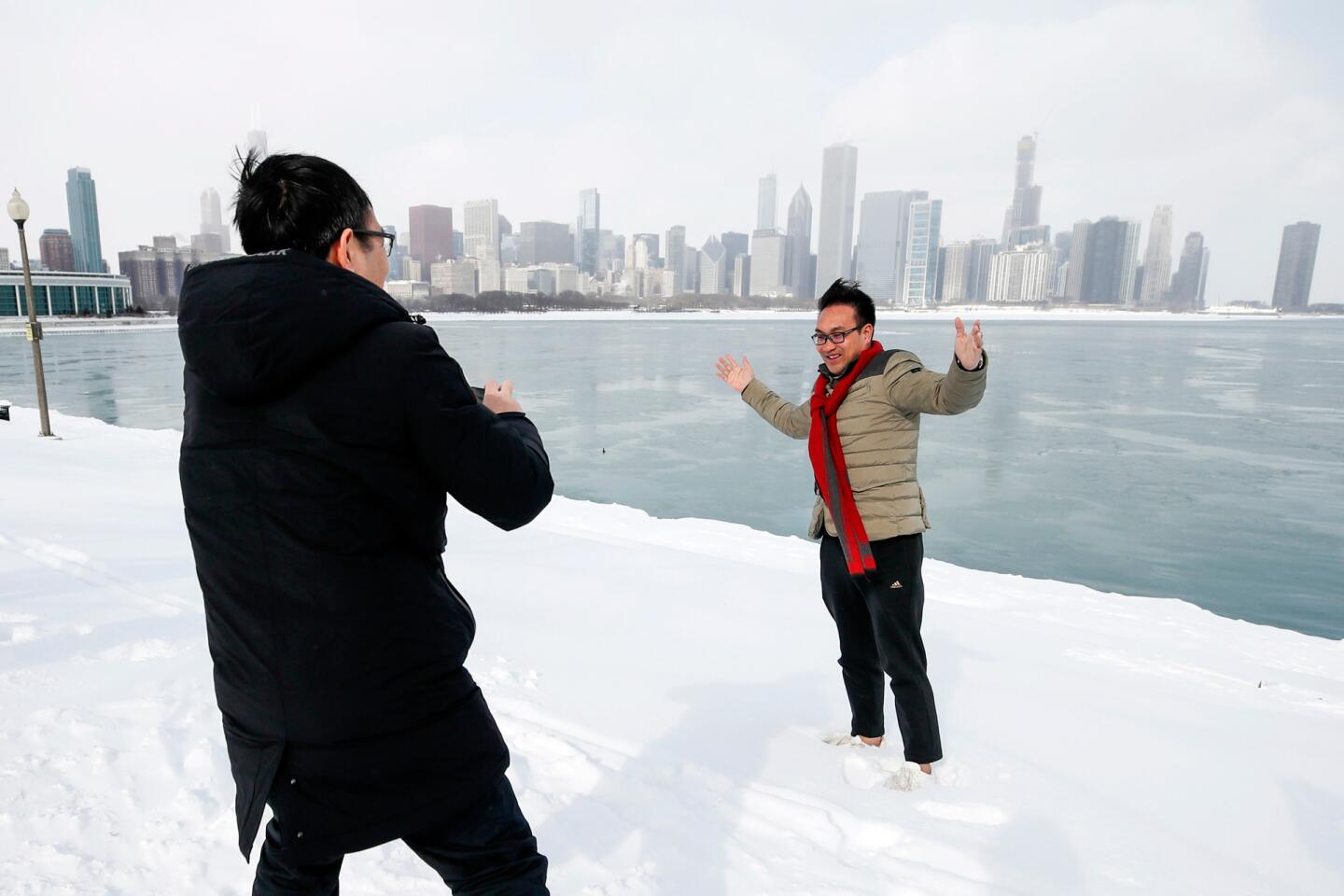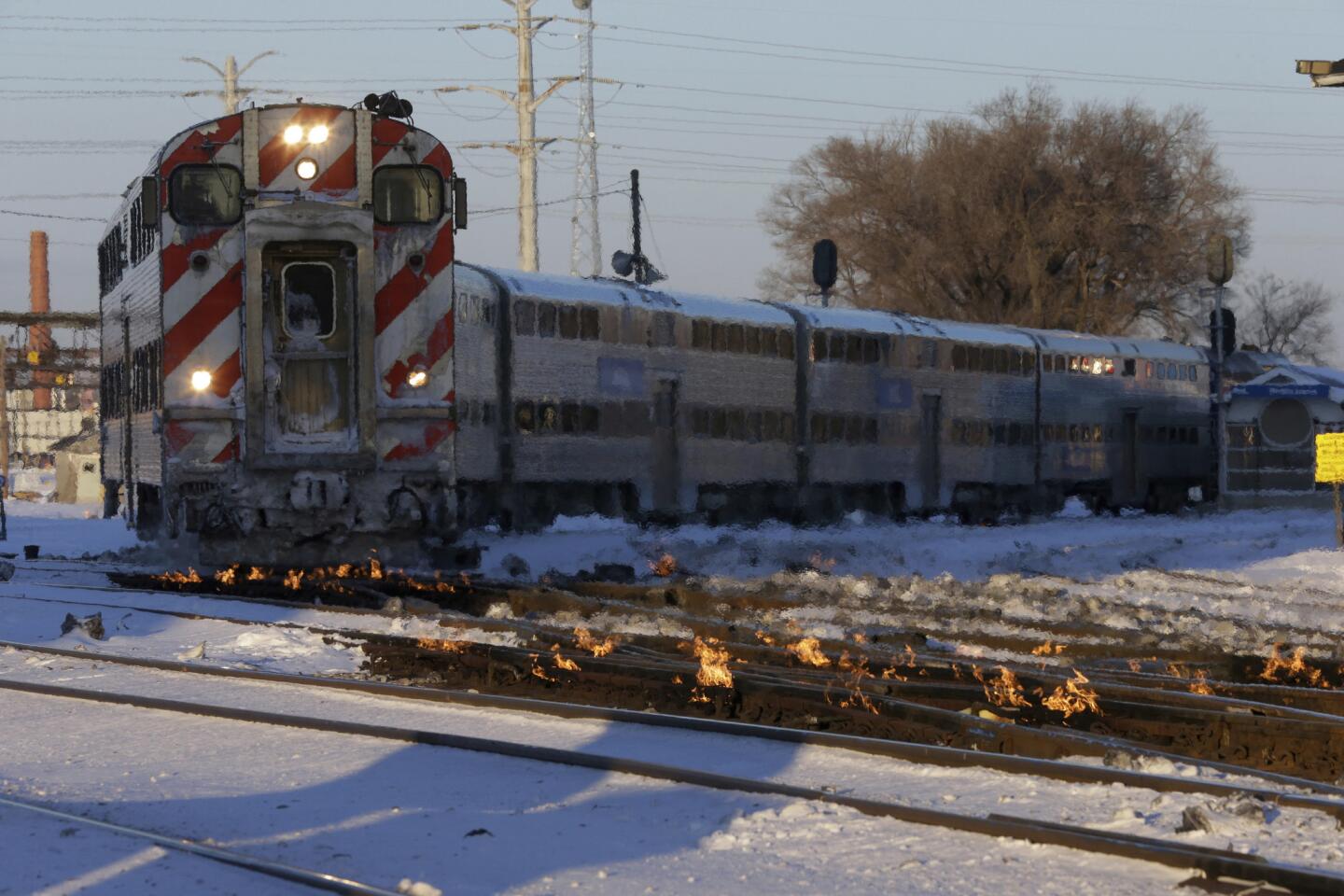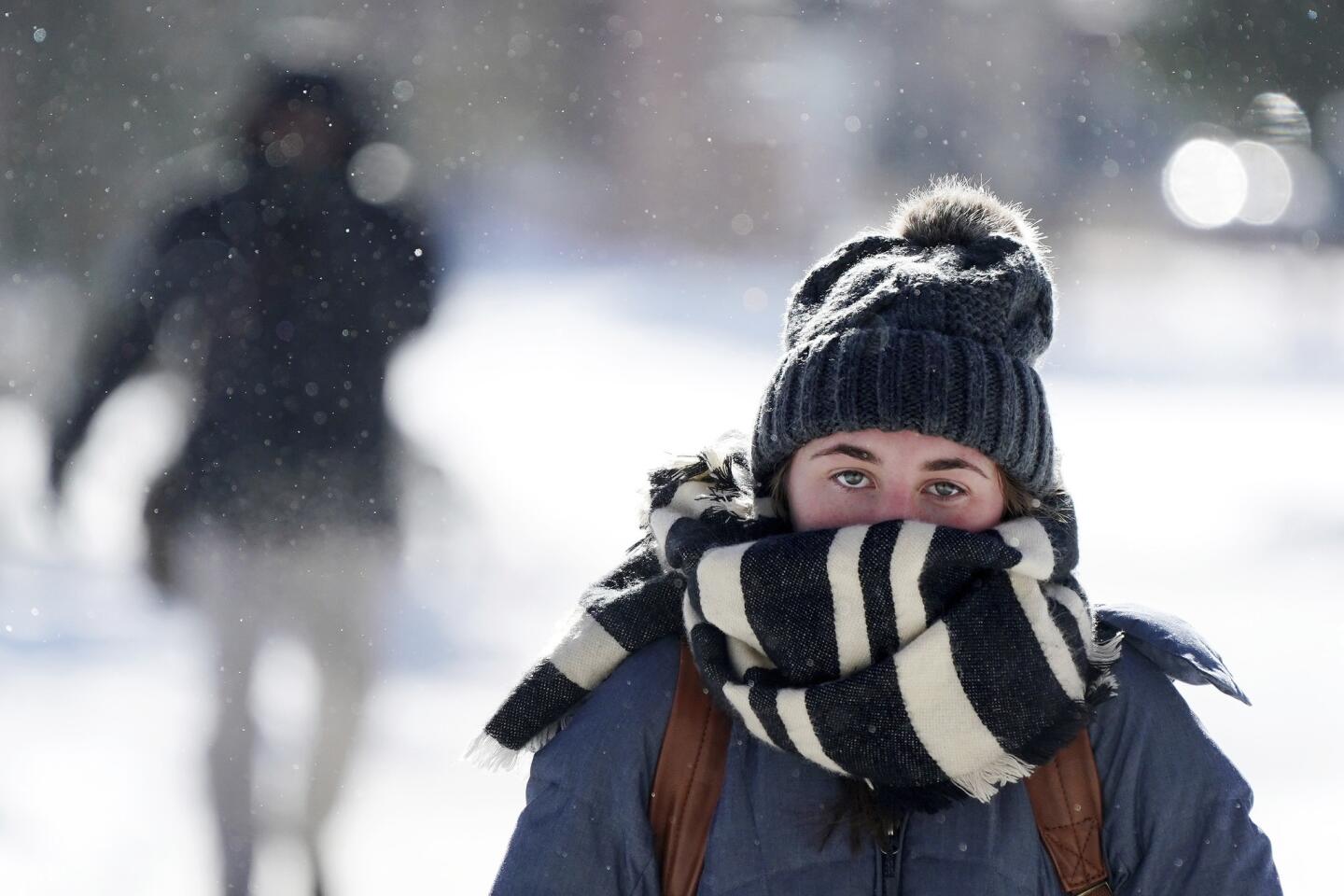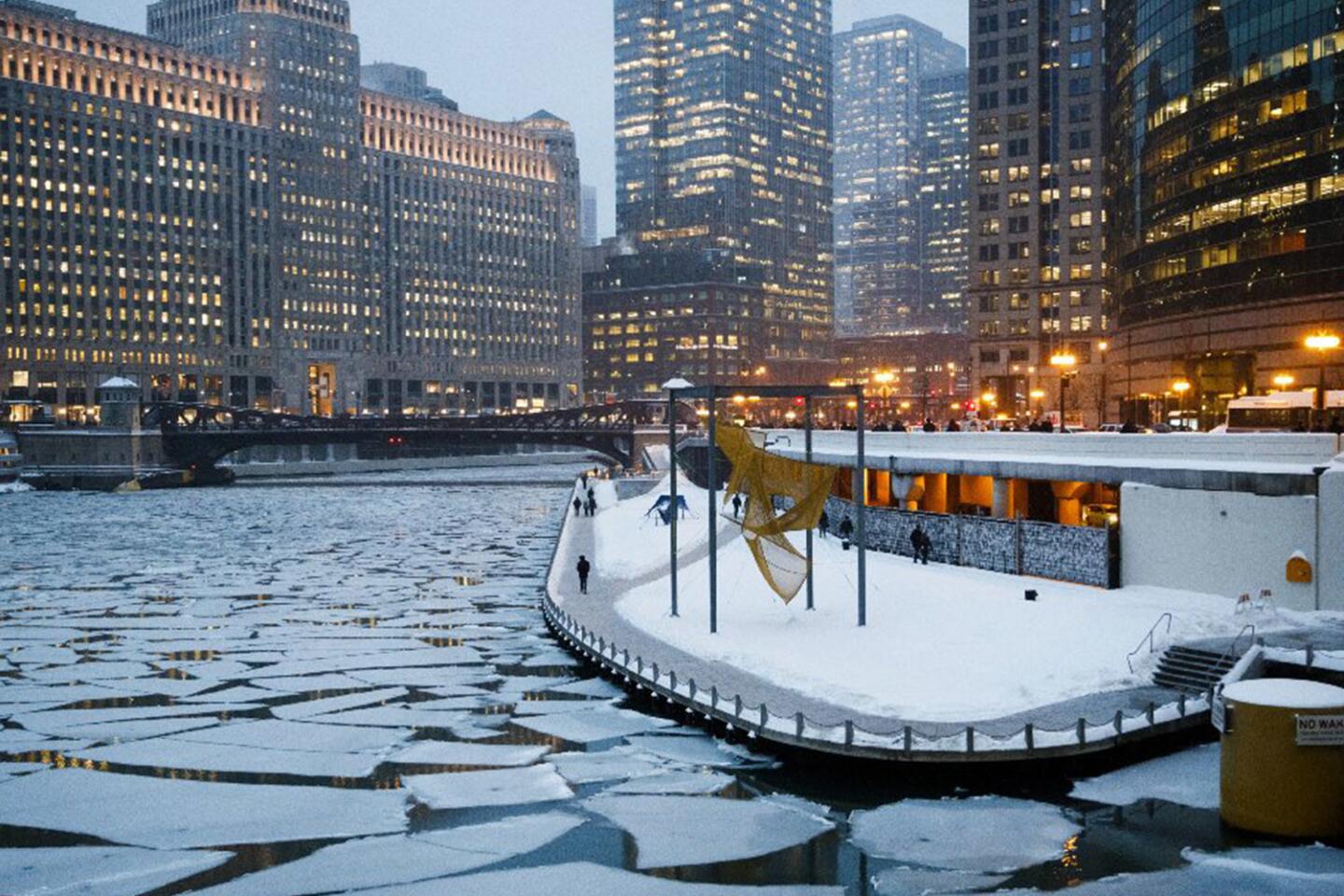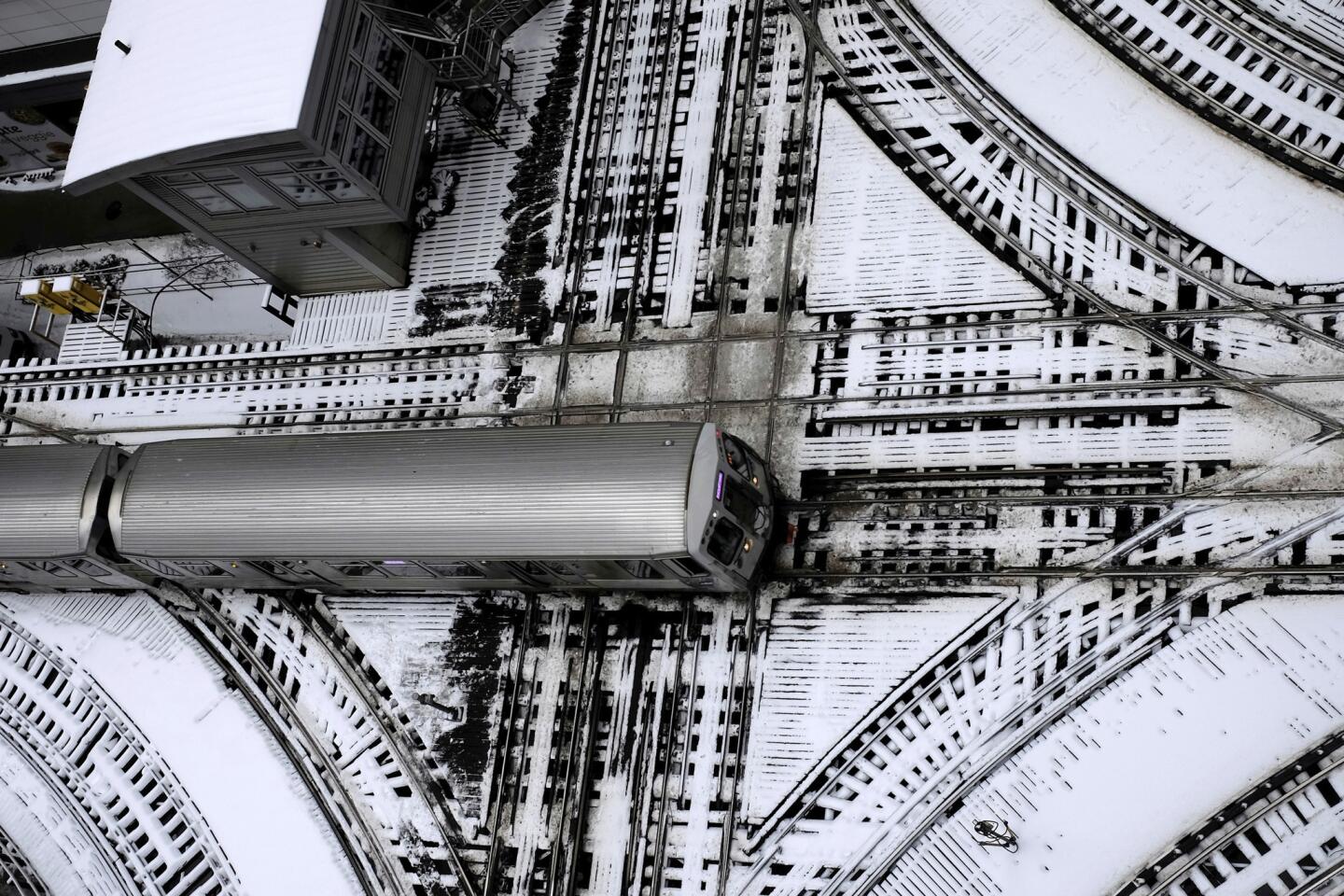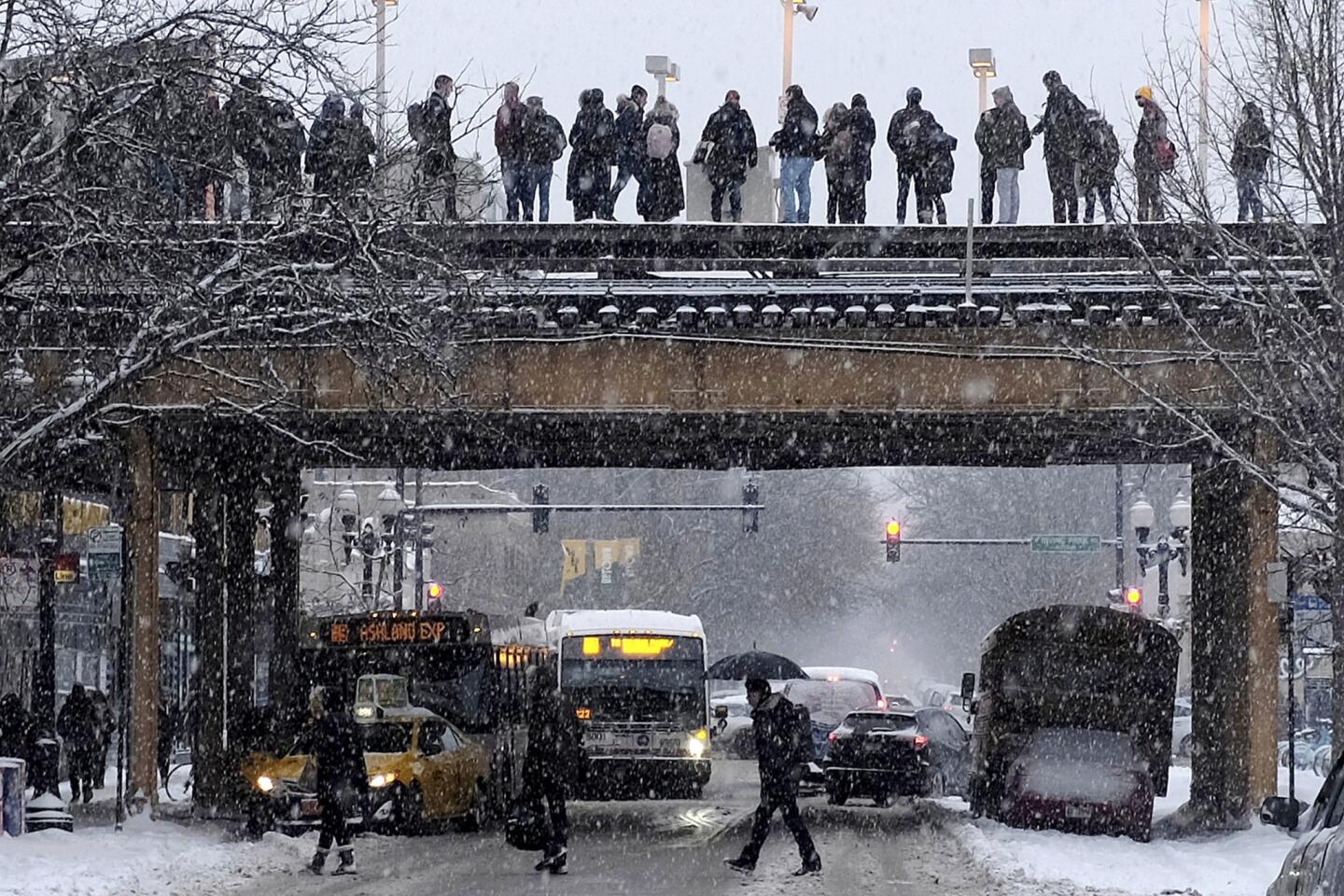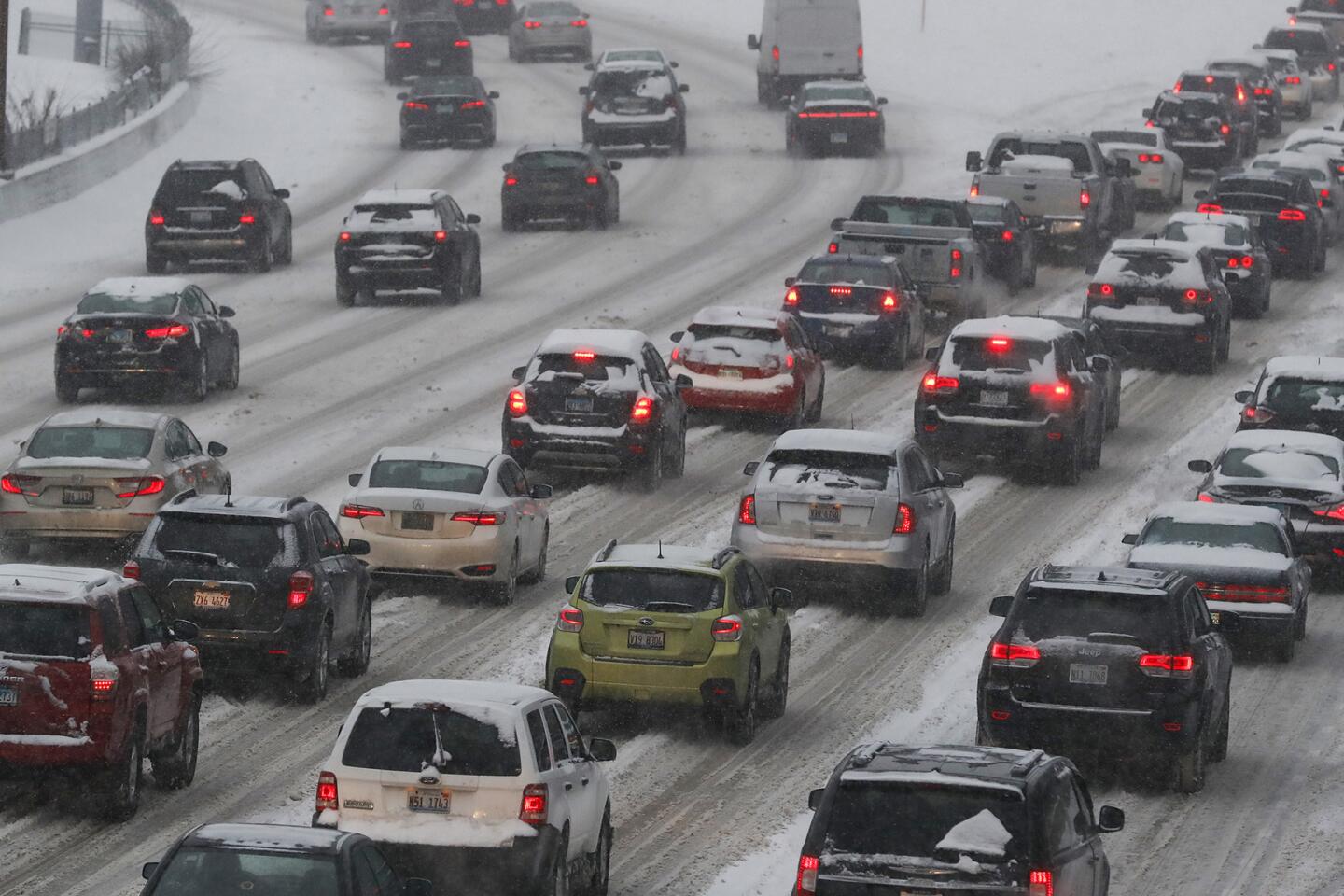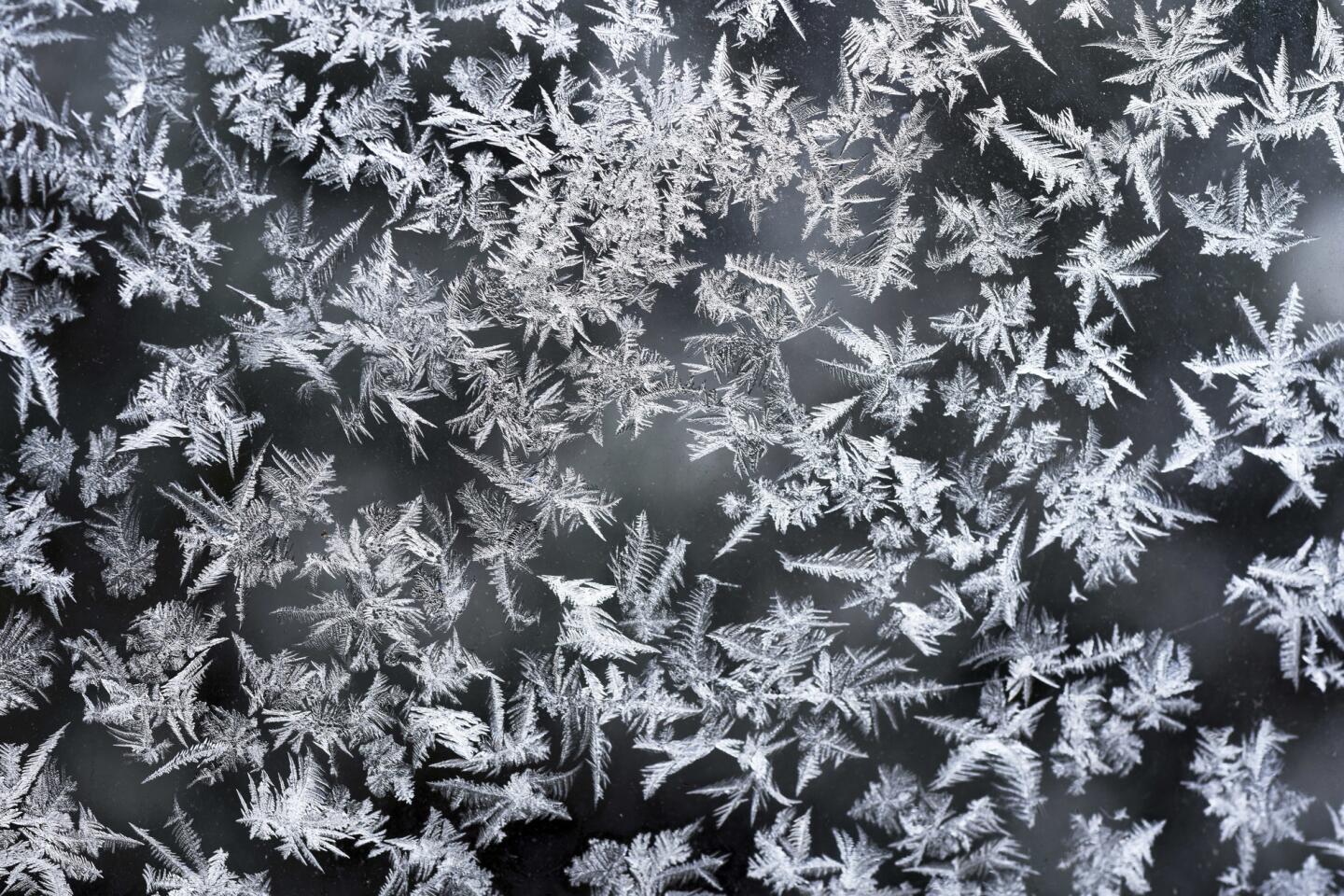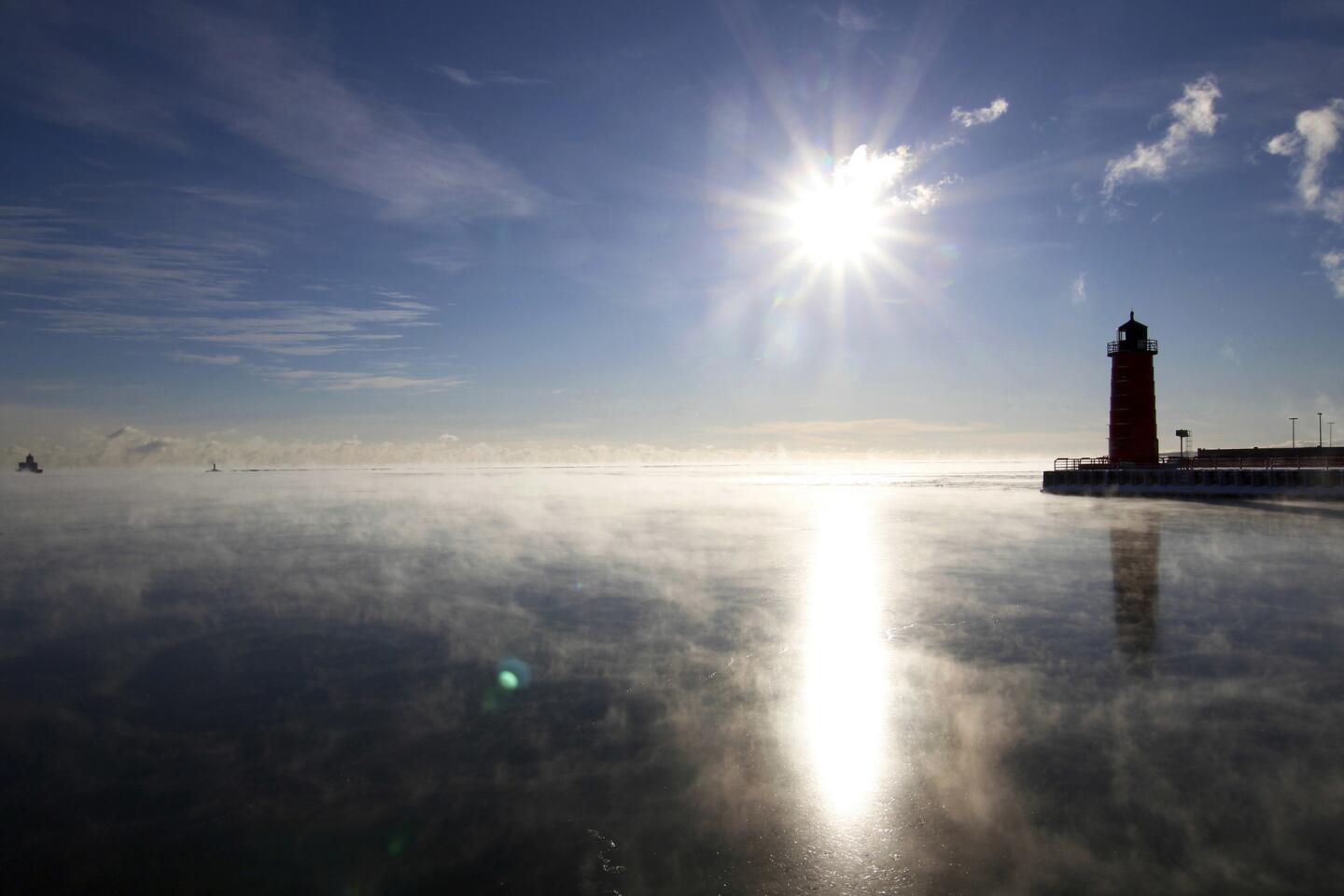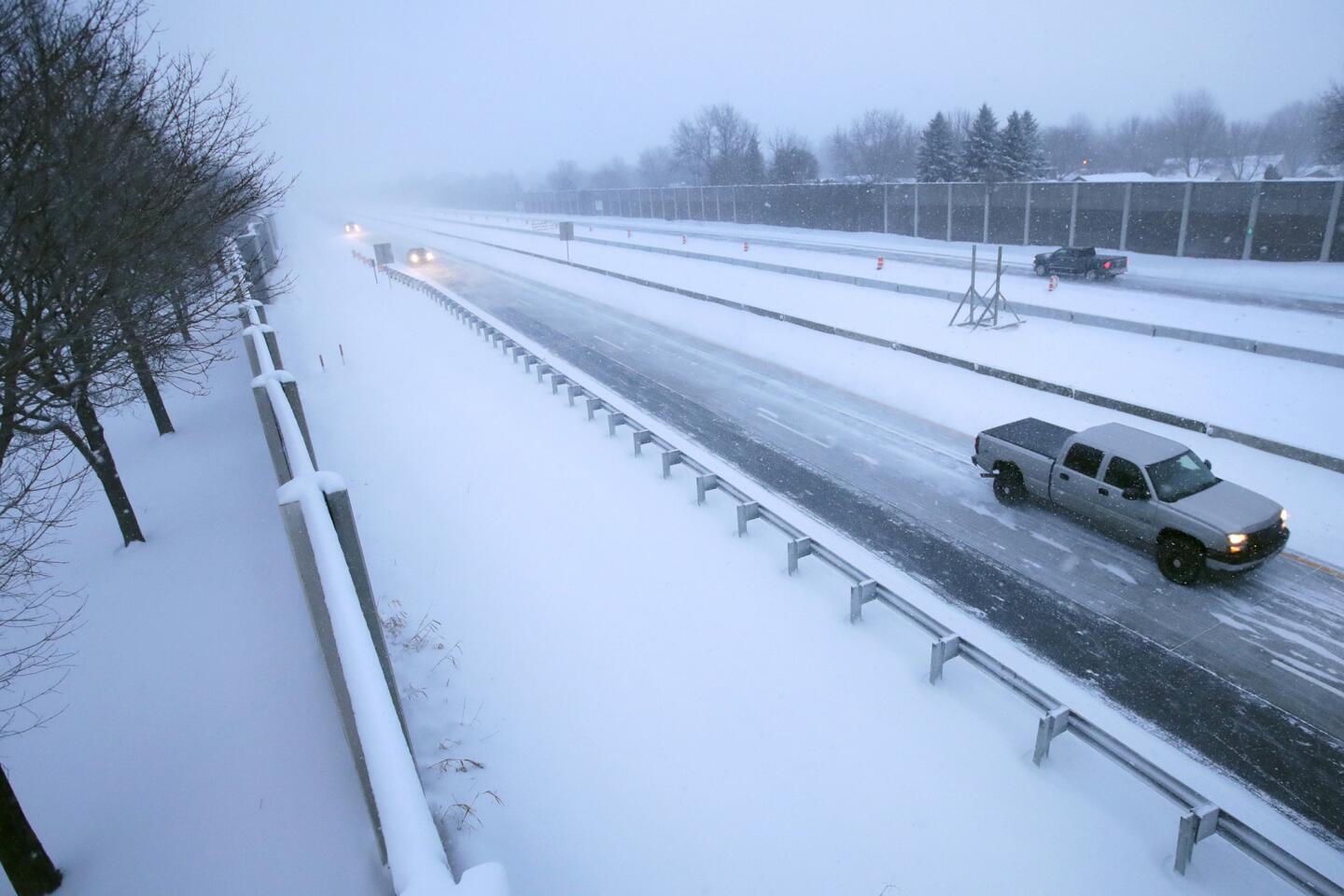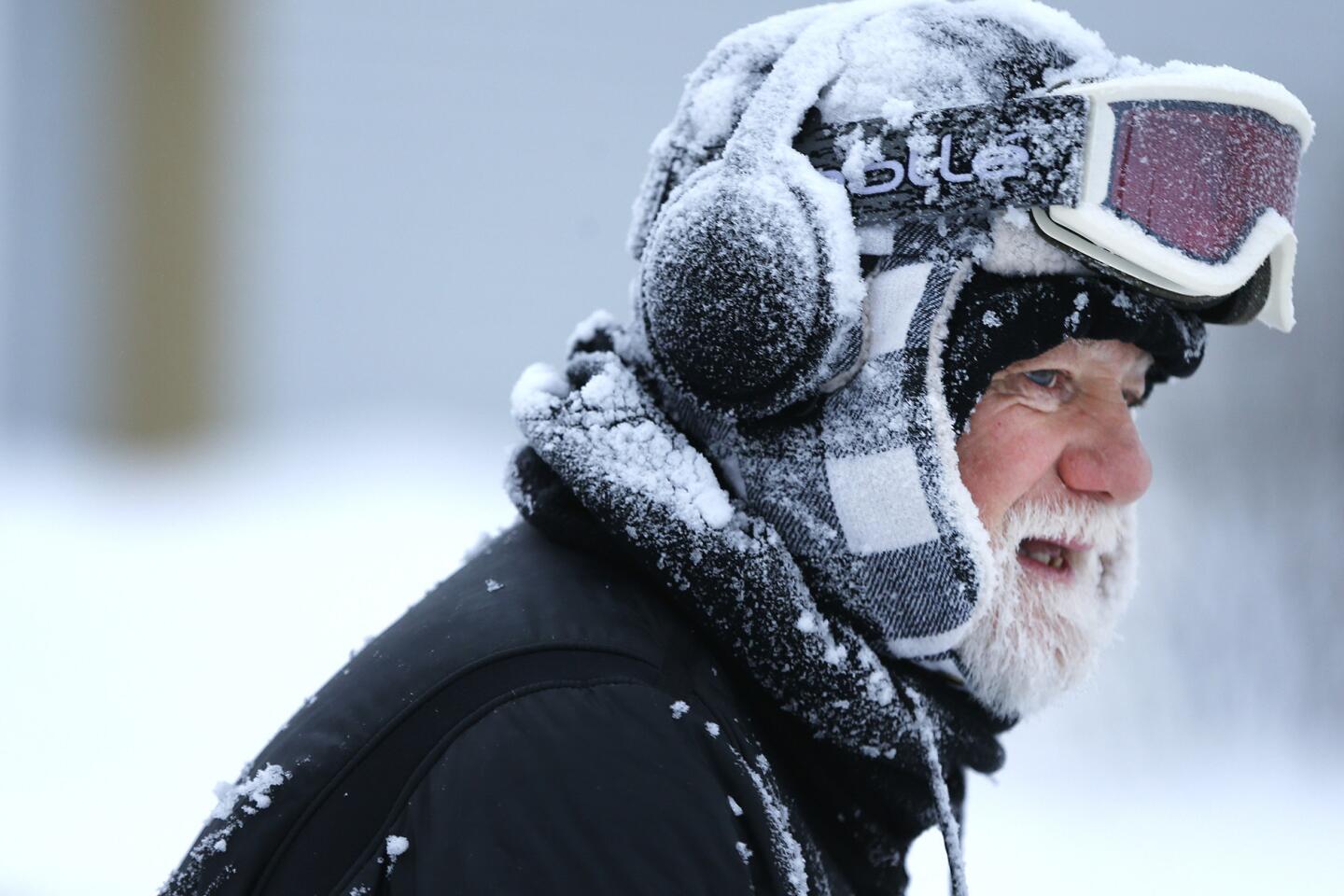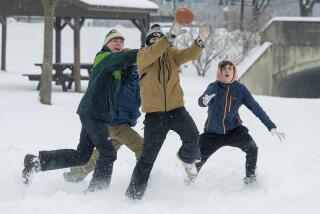Eight deaths linked to Midwest deep freeze; even mail delivery is halted
- Share via
Reporting from Bismarck, N.D. — A blast of polar air enveloped much of the Midwest on Wednesday, causing at least eight deaths, closing schools and businesses and straining infrastructure across the Rust Belt with some of the lowest temperatures in a generation.
The deep freeze snapped rail lines and canceled hundreds of flights in Chicago, the nation’s third-largest city, which was as cold as the Arctic. Heavily dressed repair crews hustled to keep water mains and gas pipes working.
The temperature dropped to a low of about minus-23, slightly above the city’s lowest-ever reading of minus-27 from January 1985. Milwaukee had similar conditions. Minneapolis recorded minus-27. Sioux Falls, S.D., saw minus-25.
Wind chills reportedly made it feel like minus-50 or worse. Downtown Chicago streets were largely deserted after most offices told employees to stay home. Trains and buses operated with few passengers. The hardiest commuters ventured out only after covering nearly every square inch of flesh against the extreme chill, which froze ice crystals on eyelashes and eyebrows in minutes.
The Postal Service took the rare step of suspending mail delivery in many places, and in southeastern Minnesota even the snowplows were idled by the weather.
The bitter cold was the result of a split in the polar vortex, a mass of cold air that normally stays bottled up over the Arctic. The split allowed the air to spill much farther south than usual. In fact, Chicago was colder than the Canadian village of Alert, one of the world’s most northerly inhabited places. Alert, which is 500 miles from the North Pole, reported a temperature that was a couple of degrees higher.
Officials in dozens of cities focused on protecting vulnerable people from the cold, including the homeless, seniors and those living in substandard housing.
At least eight deaths were linked to the system, including an elderly Illinois man who was found several hours after he fell trying to get into his home and a University of Iowa student found behind an academic hall several hours before dawn. Elsewhere, a man was struck by a snowplow in the Chicago area, a young couple’s SUV struck another vehicle on a snowy road in northern Indiana, and a Milwaukee man froze to death in a garage, authorities said.
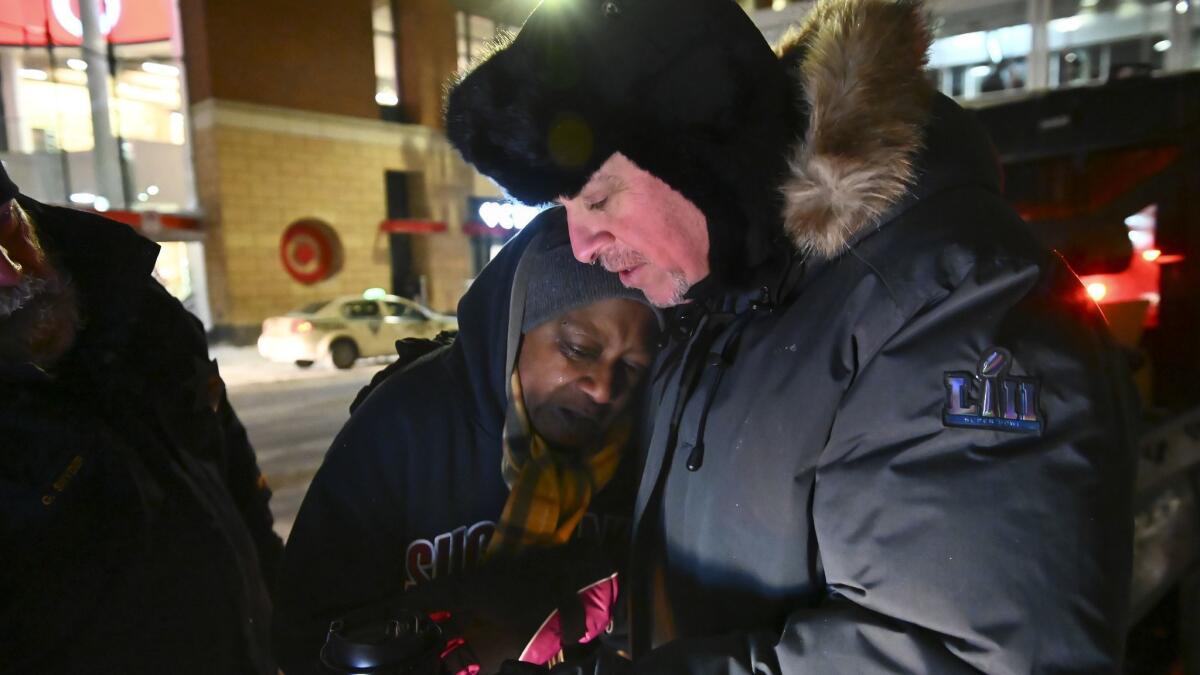
Aside from the safety risks and the physical discomfort, the system’s icy grip took a heavy toll on infrastructure, halting transportation, knocking out electricity and interrupting water service.
Amtrak canceled scores of trains to and from Chicago, one of the nation’s busiest rail hubs. Several families who intended to leave for Pennsylvania stood in ticket lines at Chicago’s Union Station only to be told all trains were canceled until Friday.
“Had I known we’d be stranded here, we would have stayed in Mexico longer — where it was warmer,” said Anna Ebersol, who was traveling with her two sons.
Chicago commuter trains that rely on electricity were also shut down after the metal wires that provide their power contracted, throwing off connections.
Ten diesel-train lines in the Metra network kept running, but crews had to heat vital switches with gas flames and watched for rails that were cracked or broken. When steel rails break or even crack, trains are automatically halted until they are diverted or the section of rail is repaired, Metra spokesman Michael Gillis explained.
A track in the Minneapolis light-rail system also cracked, forcing trains to share the remaining track for a few hours.
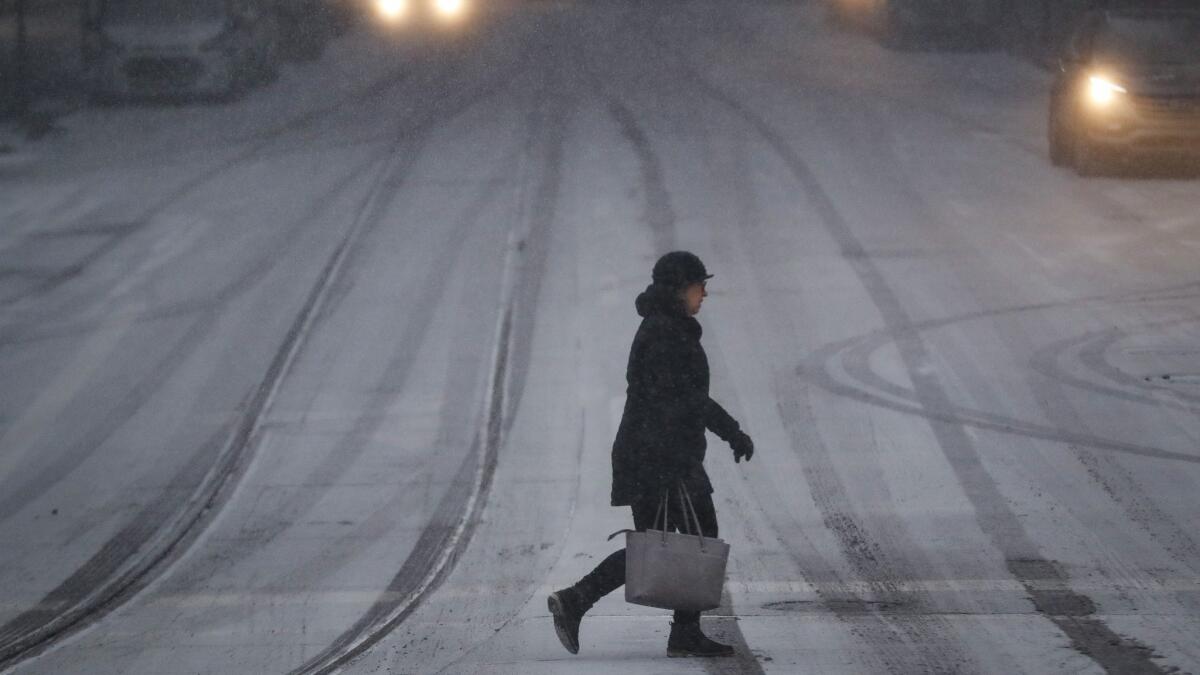
In Detroit, more than two dozen water mains froze. Customers were connected to other mains to keep water service from being interrupted, Detroit Water and Sewerage spokesman Bryan Peckinpaugh said.
Most mains were installed from the early 1900s to the 1950s. They are 5 to 6 feet underground and beneath the frost line, but that matters little when temperatures drop so dramatically, Peckinpaugh said.
On a typical winter day, the city has five to nine breaks, with each taking about three days to fix. But those repairs will take longer now with the large number of failures to fix, he added.
Detroit is in the second year of a $500-million program to rehab its water and sewer system. Last year, 25 miles of water mains were replaced.
“Water pipes are brittle. The more years they’ve gone through the freeze-thaw cycle,” the greater the stress and strain, said Greg DiLoreto, a volunteer with the American Society of Civil Engineers and chair of its committee on American infrastructure.
Pipes laid a century ago have far exceeded the life span for which they were designed, said DiLoreto, who described the aging process as “living on borrowed time.”
“When we put them in — back in the beginning — we never thought they would last this long,” he said.
The same freeze-thaw cycle beats up concrete and asphalt roads and bridges, resulting in teeth-jarring potholes.
“You won’t see them until it starts warming up and the trucks start rolling over the pavement again,” said DiLoreto who is based in Portland, Ore.
Thousands of utility customers were without electricity after high winds also caused trees and branches to fall into power lines, especially in the south Chicago suburbs. The ComEd utility in northern Illinois said crews restored power to more than 42,000 customers and were working to restore 9,400 more.
About 5,000 Duke Energy customers in central Indiana lost power due to high heating demand that tripped circuits. Another outage affecting 1,000 customers was reported near Kokomo, Ind., about 40 miles north of Indianapolis.
Low temperatures can cause overhead wires to contract, said Otto Lynch, chief executive of Power Line Systems in Madison, Wis., and a member of the American Society of Civil Engineers.
“The tension goes way up the wire and gets tighter and causes poles to break,” Lynch said. “The wires are usually not going to break. It’s really dependent on how the line was designed. Fifty years ago, they didn’t do a whole lot of engineering” for the coldest possible temperatures.
More to Read
Sign up for Essential California
The most important California stories and recommendations in your inbox every morning.
You may occasionally receive promotional content from the Los Angeles Times.
